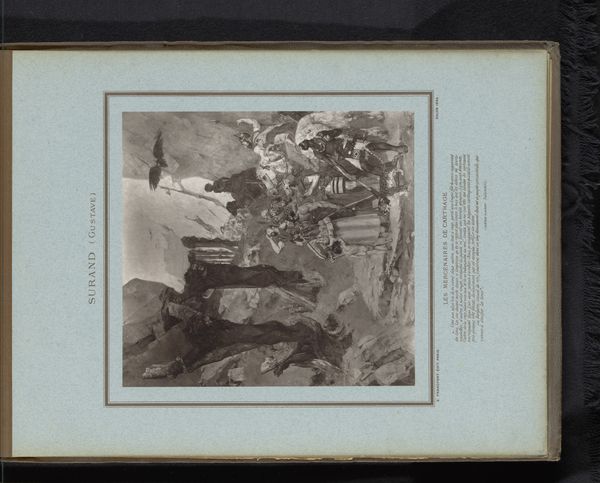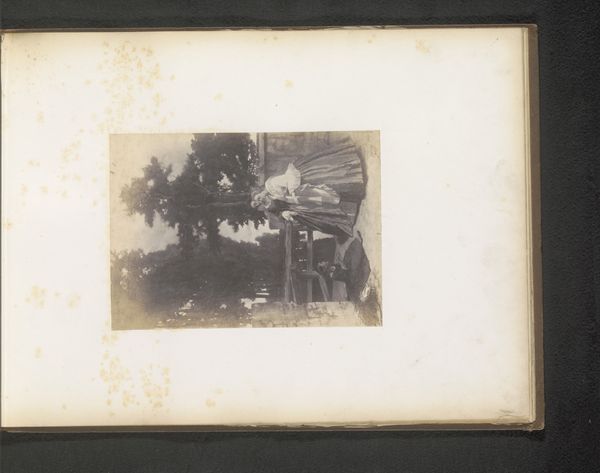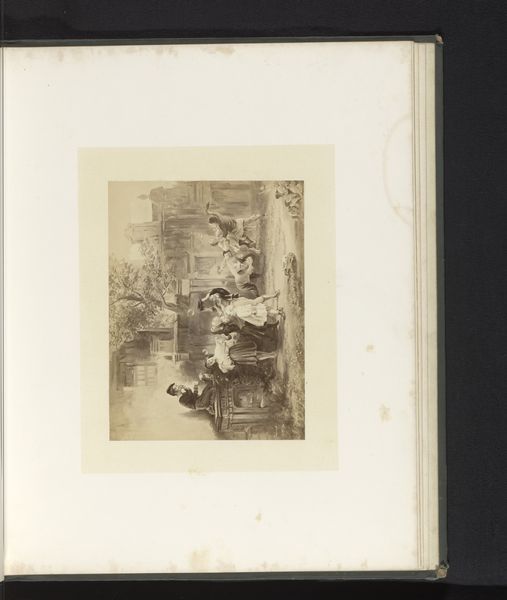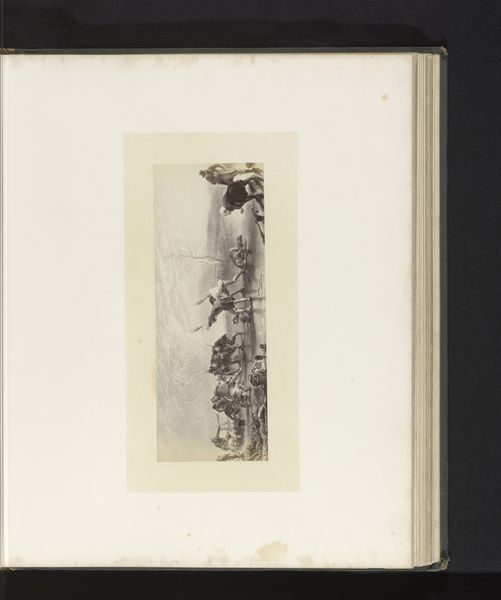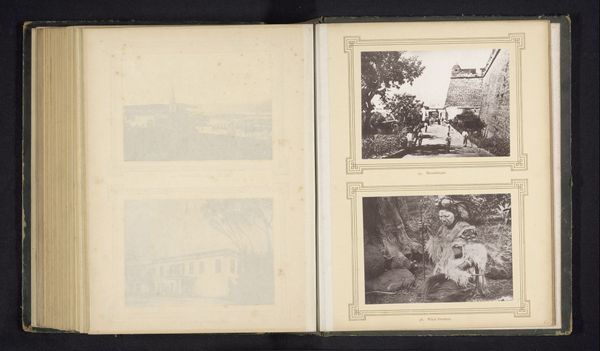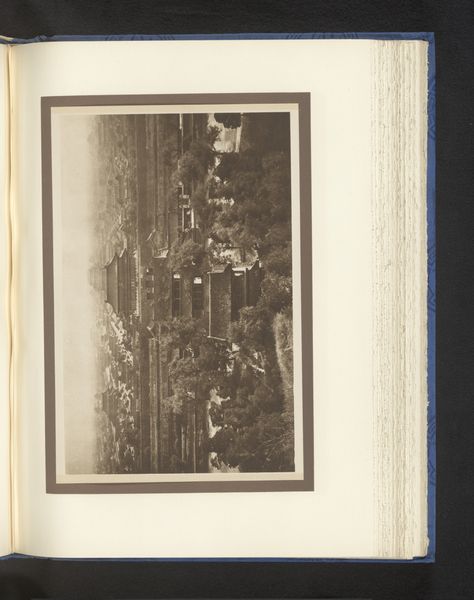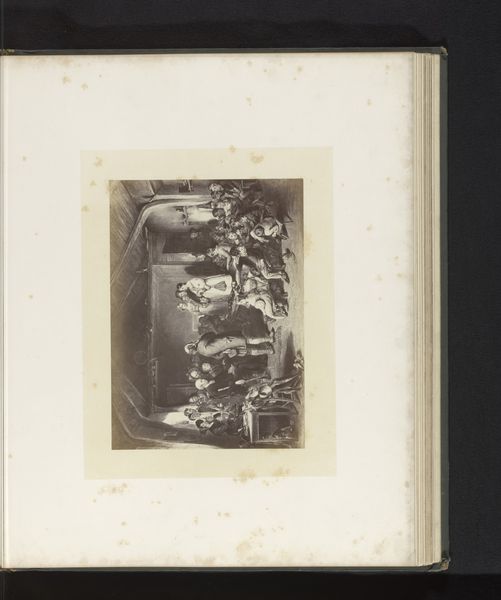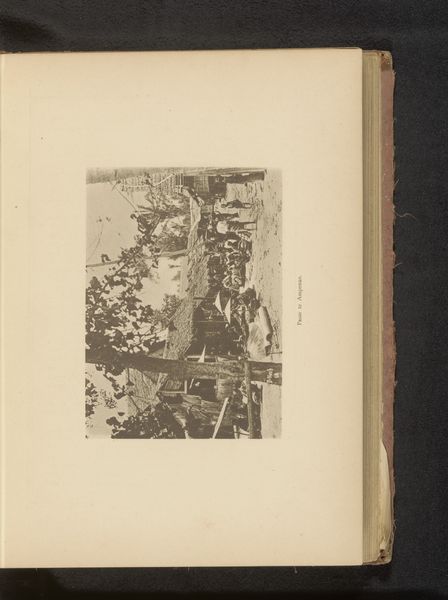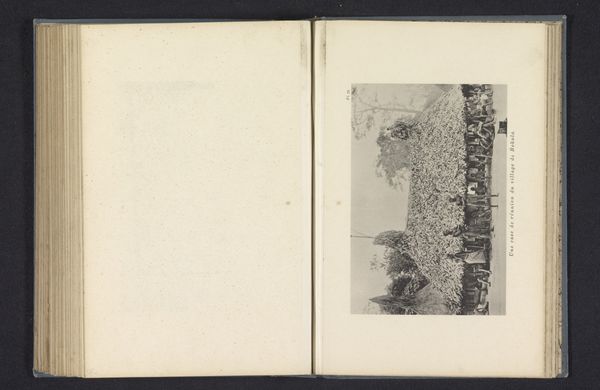
Reproductie van een schilderij van een stierenvechter in de arena, door Aimé Morot 1884
0:00
0:00
print, photography
# print
#
impressionism
#
landscape
#
photography
#
genre-painting
#
mixed media
#
watercolor
Dimensions: height 266 mm, width 137 mm
Copyright: Rijks Museum: Open Domain
Curator: We are looking at a reproduction from 1884, titled “Reproductie van een schilderij van een stierenvechter in de arena, door Aimé Morot,” which translates to “Reproduction of a painting of a bullfighter in the arena, by Aimé Morot”. It is a print, possibly from a photograph of the original artwork. Editor: It strikes me immediately as a swirling vortex of action and dust. The monochrome lends an air of drama and historical weight. You can almost hear the roar of the crowd. Curator: Indeed. Morot has masterfully captured the dynamism of the bullfight. Note the carefully arranged chaos—how the lines of the figures, the bull and the matador, converge to create a sense of escalating tension within the composition. Editor: That tension speaks volumes about the historical context. Bullfighting, even then, was a spectacle laden with social meaning, reflecting ideas of masculinity, bravery, and a particular kind of cultural identity. Was Morot celebrating or critiquing those ideals here? The medium itself seems to almost romanticize this scene, turning violence into...high drama? Curator: That's an excellent question. The very graininess of the print, its monochromatic nature, filters out much of the colouristic violence, perhaps creating some ambiguity in its meaning. Observe the play of light and shadow, how Morot employs chiaroscuro to heighten the dramatic effect. It moves this depiction away from literal representation towards symbolic gesture. Editor: So, you see formal elements serving almost as a buffer between the viewer and the harsh realities inherent in the scene? I'd argue that this also affects its reception as spectacle. Its inherent politics shift. We're removed from that immediacy, allowed to view the 'idea' of it. Curator: Precisely. It is this level of articulation between technique, historical context, and reception that, ultimately, makes engaging with an image so enduringly vital. Editor: This really highlights how visual language can simultaneously reveal and conceal socio-cultural undercurrents, and I must admit the piece invites that deep level of inspection.
Comments
No comments
Be the first to comment and join the conversation on the ultimate creative platform.
